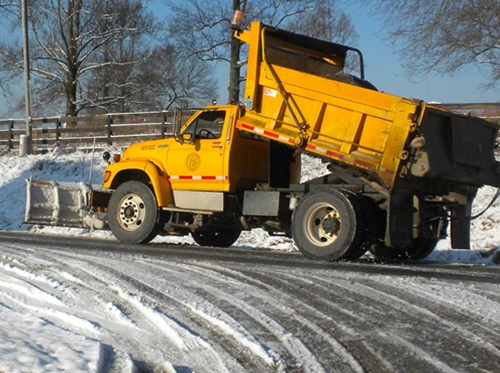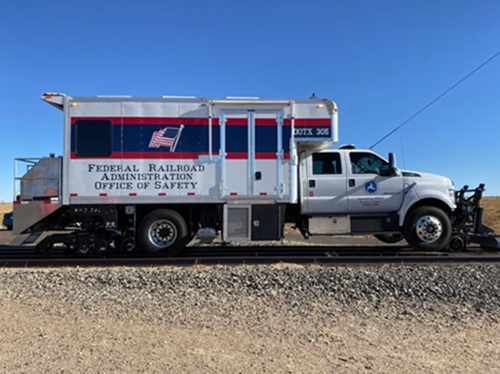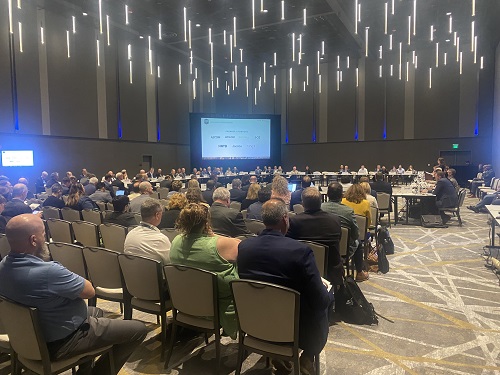The four-day American Association of State Highway and Transportation Officials 2023 Spring Meeting – held May 15-18 in Seattle – touched on a broad array of transportation topics, everything from workforce development, land-use planning strategies, and de-carbonization efforts to discretionary grant application tactics and rural mobility development initiatives.
[Above photo by AASHTO]
Washington State Governor Jay Inslee (D) visited the meeting and addressed the gathered state department of transportation executives about the need to de-carbonize the nation’s mobility system in order to reduce the negative impacts of climate change.
“Climate change is happening because we are putting carbon dioxide into the air – and transportation is responsible for 40 percent of that carbon,” the governor said in his remarks.
“So one thing I hope you embrace when you go home is that you can build a de-carbonized transportation system,” he added. “The good news is we are capable of doing this. We’re demonstrating that here in Washington State and other states are doing this as well. So be proud of the work you are doing and join this [de-carbonization] revolution, for there has never been a better time to be a transportation leader.”
AASHTO hosted four knowledge sessions at its spring meeting that delved into workforce recruitment and retention issues; roadway fatality and injury reduction strategies; how state DOTs can help local governments better manage the discretionary grant application process; and how to provide better mobility connections for rural parts of the country.
Keynote speaker Joe Minicozzi – founder and principal of land-use planning firm Urban 3 – discussed ways he believes states can be “smarter” and more cost-effective about building infrastructure to move people and goods.
Minicozzi’s perspective focused on building up city and town centers and serving their mobility needs with more multimodal connections – such as walking, biking and transit – with a reduced emphasis on road construction and vehicle use.
“Buildings are like crops so we should talk about them in terms of value per acre,” he explained. “We need to talk about them as acres to be managed. And as you stack floors in a building, you are stacking dollars; you are stacking tax revenues.”
Minicozzi argued that towns, cities, and states need to rethink their land consumption patterns – everything from parking lots and roads to commercial buildings and suburban homes – and the value placed on them.
“Don’t assume the market has this figured out,” he said. “Not all land uses are equal and transportation really shapes those places. We are all shareholders in our communities, but we don’t understand the cash flow system for them. We are essentially moving gears without understanding what we are doing.”
 Top Stories
Top Stories
State DOTs Making Preparations for Wintertime Operations
December 12, 2025 Top Stories
Top Stories

